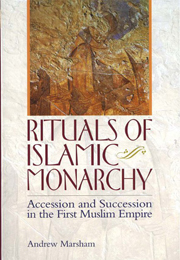Book contents
- Frontmatter
- Contents
- List of maps and figures
- Acknowledgements
- Map 1
- Map 2
- Map 3
- INTRODUCTION
- PART I LATE ANTIQUE ARABIA AND EARLY ISLAM (c. 550–c. 660)
- PART II THE UMAYYAD CALIPHATE (c. 660–750)
- PART III THE EARLY ABBASID CALIPHATE (c. 750–809)
- INTRODUCTION
- 10 THE CONSOLIDATION OF ABBASID POWER: AL-MANṢŪR AND AL-MAHDĪ (754–785)
- 11 THE CALIPHATES OF MŪSĀ AL-HĀDĪ (785–786) AND HĀRŪN AL-RASHĪD (786–809)
- 12 ‘DISPOSITIVE DOCUMENTS’ FOR THE EARLY ABBASID SUCCESSION
- PART IV THE MIDDLE ABBASID CALIPHATE (809–865)
- CONCLUSION
- Genealogical table of Quraysh
- Genealogical table of the Abbasid caliphs
- Bibliography
- Index
INTRODUCTION
from PART III - THE EARLY ABBASID CALIPHATE (c. 750–809)
Published online by Cambridge University Press: 05 September 2013
- Frontmatter
- Contents
- List of maps and figures
- Acknowledgements
- Map 1
- Map 2
- Map 3
- INTRODUCTION
- PART I LATE ANTIQUE ARABIA AND EARLY ISLAM (c. 550–c. 660)
- PART II THE UMAYYAD CALIPHATE (c. 660–750)
- PART III THE EARLY ABBASID CALIPHATE (c. 750–809)
- INTRODUCTION
- 10 THE CONSOLIDATION OF ABBASID POWER: AL-MANṢŪR AND AL-MAHDĪ (754–785)
- 11 THE CALIPHATES OF MŪSĀ AL-HĀDĪ (785–786) AND HĀRŪN AL-RASHĪD (786–809)
- 12 ‘DISPOSITIVE DOCUMENTS’ FOR THE EARLY ABBASID SUCCESSION
- PART IV THE MIDDLE ABBASID CALIPHATE (809–865)
- CONCLUSION
- Genealogical table of Quraysh
- Genealogical table of the Abbasid caliphs
- Bibliography
- Index
Summary
In the latter part of the Umayyad period, clandestine revolutionaries in the northeastern frontier province of Khurasan began to call for al-riḍā min āl Muḥammad (‘the Chosen One from the Family of the Prophet’) and al-kitāb wa'l-sunna (‘the Book and Custom’). The first slogan invoked the idea that the caliph should be drawn from the Prophet's clan of Hāshim (as opposed to merely from Quraysh, like the Umayyads) and that he should be chosen by the Muslims, not imposed upon them. The second appealed to Islamic piety as the basis for just rule: if God's word and the customs of His Prophet and His community were followed, then a truly just society would be the result. The collapse of Umayyad dynastic unity after 743–4 led to a series of rebellions across the caliphate. Then, in 747, sections of the army in Khurasan loyal to the ‘Hashimite’ cause rebelled. Many of the indigenous population of the province joined the revolt, pledging allegiance to a movement that held out the possibility of access to the benefits of membership of the Muslim military elite.
With their numbers swollen by the new converts, the revolutionary armies swept out of Khurasan and won a series of lightning victories. Syncretic, millenarian beliefs gave these armies a fervour that worked to their advantage on the battlefield. In the winter of 749–50, with success looking increasingly certain, a revolutionary cell in the Iraqi city of Kufa proclaimed cAbd Allāh b. Muḥammad Abū al-cAbbās as the new caliph (r. c. 750–4).
- Type
- Chapter
- Information
- Rituals of Islamic MonarchyAccession and Succession in the First Muslim Empire, pp. 183 - 191Publisher: Edinburgh University PressPrint publication year: 2009



